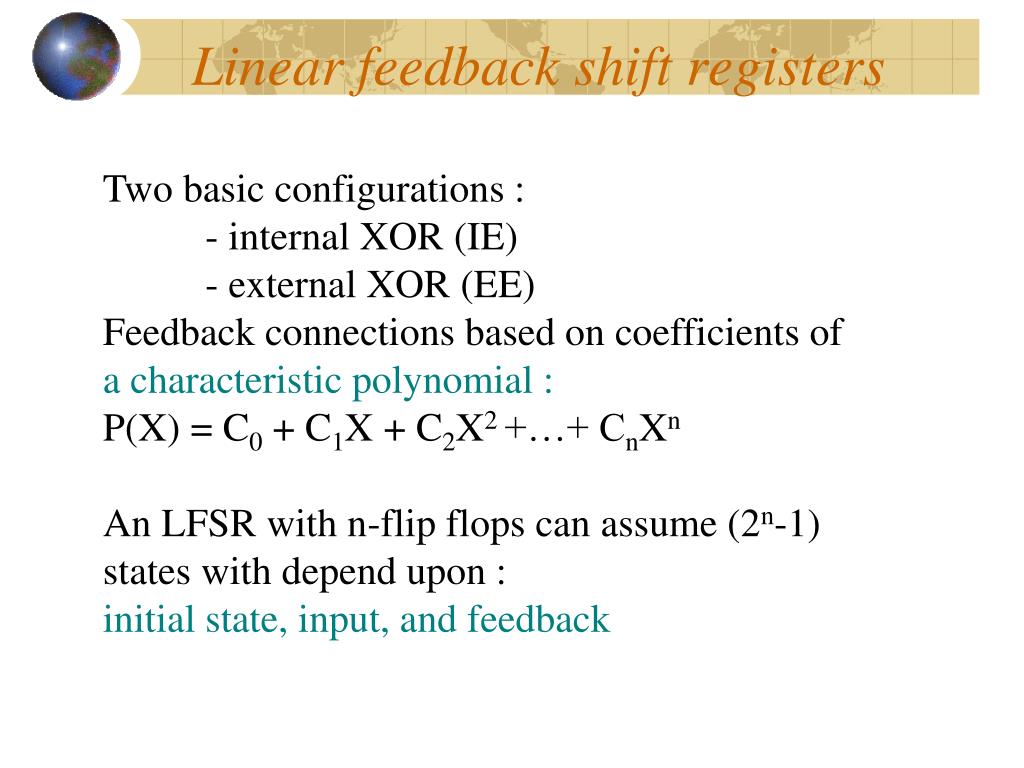
A LFSR generates a random sequence of bits. The real interest in random generation was started by Galton (if it matters Romans did toss coins and stored bits), random numbers by Pearson, first PRNG is attributed to von Neuman, first working one to Lehmer, as for Fibonacci his insights are nice, but he started his sequences to count rabbits with no connection to PRNG whatsoever. Based on the simple feedback sequences a large body of mathematical theory can be applied to analyzing. Two pseudo-code versions of the code are given, the operation of LFSRs is explained, C-version of the pseudo-code versions is presented, and the output of the code, when run on two input samples. The same stands for LFG - lagged Fibonacci generator was (in multiplicative form) introduced by Marsaglia to overcome deffects of additive one. This report presents an implementation of the Berlekamp-Massey linear feedback shift-register (LFSR) synthesis algorithm in the C programming language. I cannot find any reference why it is called Fibonacci LFSR, but it is inventors will to name it.

+ b n x n +., be given polynomials in F 2 x and let h ( x) f ( x) g ( x) c 0 + c 1 x +. The name come (afair) from Fibonacci work on recurence relation, his sequence, and further interest in characteristic polynomials of generating sequences, but the one who gave closed form solution to Fibonacci numbers and researched characteristic equation (the one used in generator with possibly minimal monic to make longest period), was Lucas. Example of an LFSR: Let f ( x) a 0 + a 1 x +. The output of this gate is then used as feedback to the beginning of the shift register chain. Several taps off of the shift register chain are used as inputs to either an XOR or XNOR gate.

Its output depends on state and polynomial, not two states. The linear feedback shift register is implemented as a series of Flip-Flops inside of an FPGA that are wired together as a shift register. "In computing, a linear-feedback shift register (LFSR) is a shift register whose input bit is a linear function of its previous state." wiki quote.


 0 kommentar(er)
0 kommentar(er)
